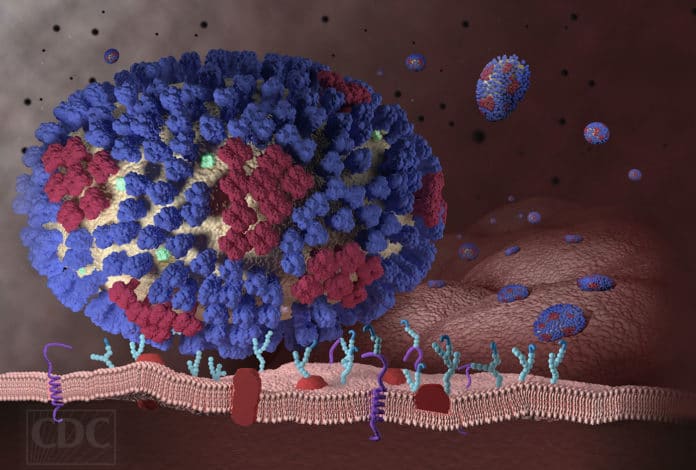Type A influenza infection can be severe and cause widespread outbreaks and disease. A pandemic can occur when a new and very different influenza A virus emerges that both infect people and can spread efficiently between people.
Influenza A virus (IAV), a highly infectious respiratory pathogen, has continued to be a significant threat to global public health. Various studies have suggested that the evolution of influenza A virus is mainly mediated through the mutation of the virus itself and the re-assortment of viral genomes derived from multiple strains.
According to a World Health Organization report, viral infections are a leading cause of illness and death. The new coronavirus, for example, has led to more than 24,000 confirmed cases globally, including more than 3,200 severe ones and nearly 500 deaths as of Feb. 5. Influenza A, a highly contagious virus that arises every year- is concerning due to the unpredictable effects of its vaccine.
Now, Rutgers scientists have devised a gold-based tool to monitor influenza A virus mutations in real-time. The tool is expected to help virologists learn how to stop viruses from replicating.
This new tool works by measuring viral RNA in live influenza A cells. Using the tool, virologists can get better insights on the cellular features that lead a cell to produce abnormally high numbers of viral offspring and on possible conditions that favor stopping viral replication.
Senior author Laura Fabris, an associate professor in the Department of Materials Science and Engineering in the School of Engineering at Rutgers University-New Brunswick said, “The new study highlights a promising new tool for virologists to study the behavior of influenza A, as well as any other RNA viruses, in host cells and to identify the external conditions or cell properties affecting them.”
“Until now, studying mutations in cells has required destroying them to extract their contents. The new tool enables analysis without killing cells, allowing researchers to get snapshots of viral replication as it occurs. The next steps include studying multiple segments of viral RNA and monitoring the influenza A virus in animals.”
The study is published in The Journal of Physical Chemistry C.
